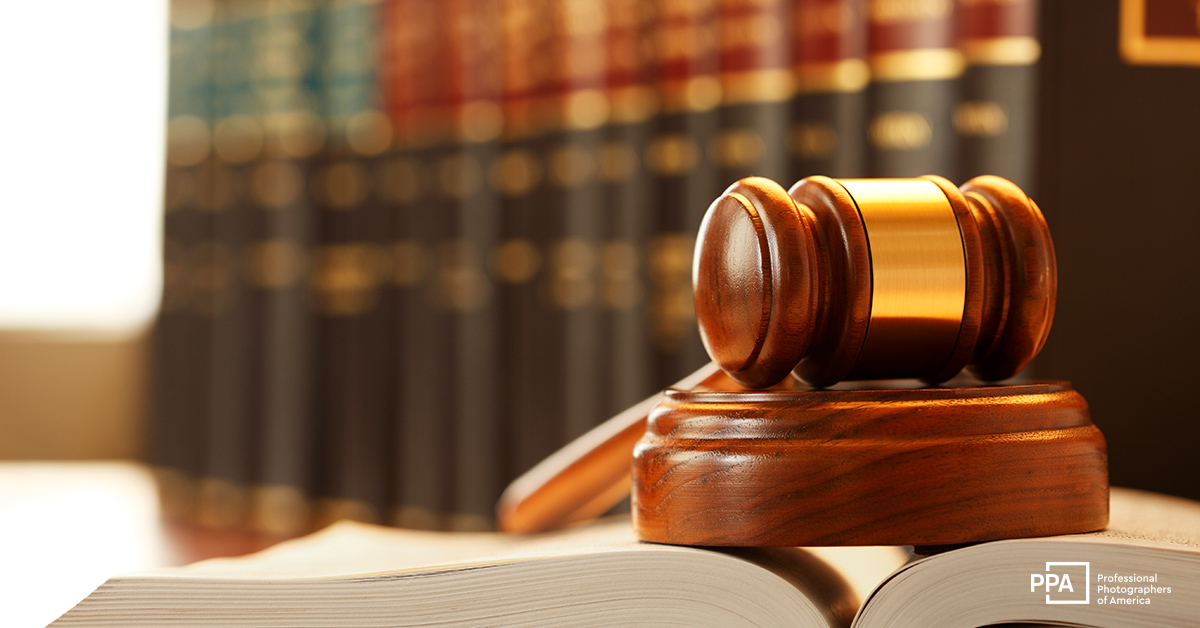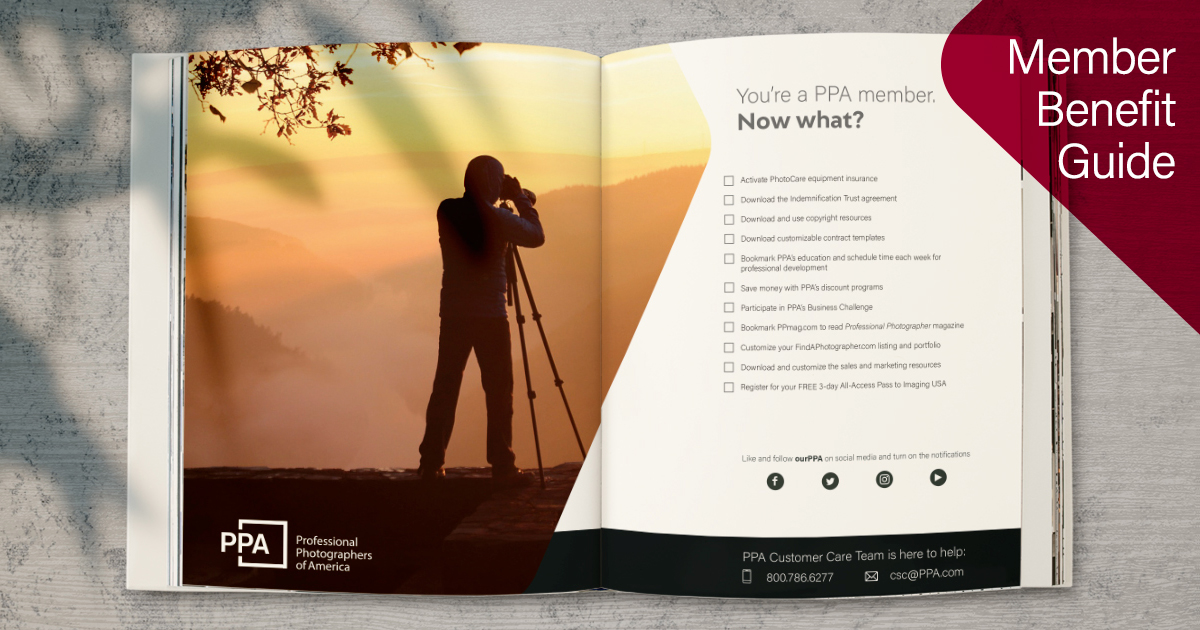Articles
Copyright Law: Understanding Your Rights as a Photographer

In today's era of social media, having a firm grasp of your rights as a photographer is essential to ensure you receive the recognition you deserve. Amidst the overwhelming volume of information available, you might find yourself wondering:
- What legal safeguards exist to protect photographers like me?
- What actions should I take if someone uses my photo without my permission?
- How long do photographers retain ownership of their images?
In this article, we will provide an overview of copyright law and its implications for your photography business. Additionally, we will explore the copyright resources and tools available for PPA members.
What is Copyright?
Copyright law in the United States is designed to prevent the unauthorized replication of a "work of authorship." An amendment in 1988 extended this law to encompass visual works, including photography. Though the legalese can be daunting, in simpler terms, copyright law stipulates that when you capture a photograph, you automatically become the copyright owner of that image. As the owner, you hold exclusive rights to:
- Reproduce the photograph
- Display the image in public
- Distribute the photo
- Create derivatives of the image
It all seems straightforward, right? But what exactly constitutes a "derivative"?
A "derivative work" refers to a new version of an already copyrighted piece. Examples of derivatives include special re-edits of movies, art reproductions, and literary translations. Another common instance is a film based on a book or play. In photography, whenever someone produces a photograph that closely resembles or is "substantially similar" to another copyrighted work, they may be infringing on the original owner's rights.
To determine if copyright laws have been violated, a court of law compares and evaluates the derivative work against the original. Essentially, a photographer who meticulously recreates an original work's composition, lighting, and other creative aspects is more likely to be found guilty of copyright infringement than a photographer who merely captures subjects that already exist in other photos (e.g., monuments, nature). This allows multiple photographers to photograph the same subjects, like the Golden Gate Bridge, without infringing on each other's artistic rights.
If you suspect that your image has been used without your permission, PPA provides a copyright infringement tool to assist you in determining your next steps.
Lessons from Mercedes Benz & Detroit’s Eastern Market Murals
Beyond safeguarding your own creative rights, it's essential for photographers to remain vigilant about unintentionally encroaching upon the rights of other artists. The last thing you want is to inadvertently misuse someone else's artistic work.
Consider, for instance, Mercedes Benz's 2018 advertising campaign, where the company's new vehicle sped through Detroit's eclectic Eastern Market district, passing by commercial buildings adorned with vibrant murals. Undeniably a captivating concept. However, the artists behind these murals, including James Lewis, Jeff Soto, Maxx Gramajo, and Daniel Bombardier, were never approached for permission to use their work, let alone given credit:
“While Mercedes sought municipal permission to make beautiful shots of its vehicles on public city streets, it did not seek the muralists’ permission to make and post images of their works on Instagram. Copyright infringement? Mercedes thought not. The muralists—James Lewis, Jeff Soto, Maxx Gramajo, and Daniel Bombardier—thought otherwise.”
You can delve into the complete story on PPmag.com. The Mercedes Benz ad campaign holds significance for two primary reasons:
- It underscores the importance of remaining conscious of how others' work features in your photographs.
- It serves as a prime example of how your own work might be used in ways you did not anticipate.
The section that follows delves deeper into the concept of "fair use" in copyright law.
Understanding Fair Use
Fair use represents a noteworthy exception within copyright law. It allows for the reproduction of copyright-protected works in specific types of writing, such as journalism, critiques, research, and educational materials, without requiring the author's permission.
For instance, consider the scenario where you display your photography in an art gallery. In this context, an art publication typically doesn't need your explicit permission to reproduce your image, provided it's being used as part of a critique. Conversely, a newspaper may publish photographs of artworks and include them in an article. Both of these instances fall within the boundaries of "fair use" guidelines.
When evaluating whether a reproduction qualifies as fair use, the U.S. Copyright Act outlines several factors to consider:
- Nature of Use: Is the use commercial or for nonprofit educational purposes?
- Creativity: Is the copyrighted work highly creative, or is it fact-based?
- Extent of Reproduction: Was the entire original work reproduced, or only a portion of it?
- Impact on Value: Does the reproduction diminish the value of the original work or have no significant effect on it?
It's essential to note that social media marketing rarely qualifies as "fair use" when it comes to using images. If you suspect that your photographic work is being used without your consent, explore the resources provided by PPA below to determine if further action is warranted.
Accessing Useful Resources
Keep in mind that if a company incorporates one of your images into their marketing efforts, be it on social media or other platforms, without your consent, they are infringing on your rights as a creator. So, what steps should you take if you suspect your work has been used without your permission? PPA offers a suite of resources aimed at enhancing your understanding of copyright law, including a powerful Copyright Infringement Tool that leaves no room for doubt about whether your rights as a creator have been violated.
Protecting your work is vital to your success as a photographer. For more PPA resources, click here.
Additional Sources:
Photographers should be cautious about using murals as backdrops
What are derivative works under copyright law?
U.S. Copyright Office, Subject Matter and Scope of Copyright
Image Copyright on Social Media: Everything You Need to Know
Are you using the full range of your PPA Membership benefits? Don't miss out on resources you didn't know you had! View the PPA Member Benefits Guide.

